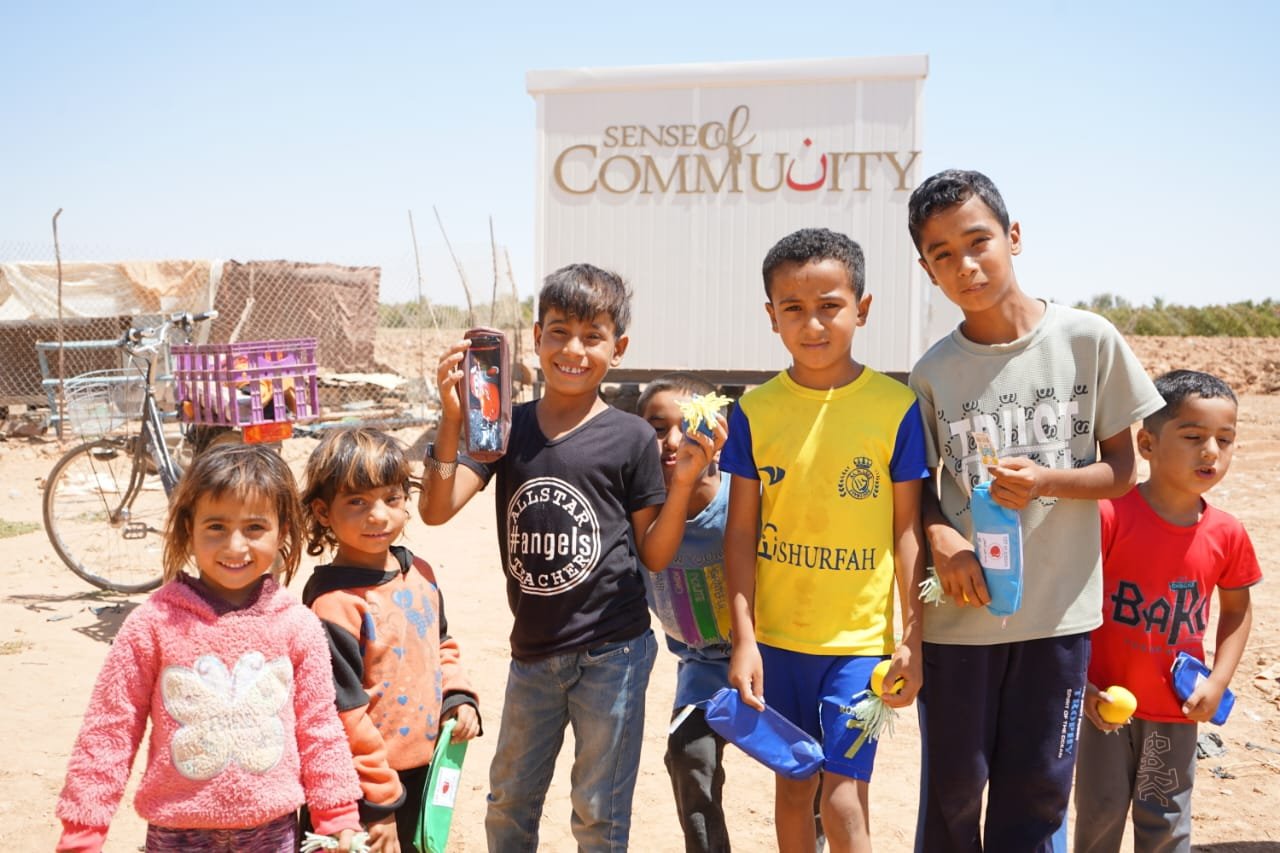Introduction to the Issue
The plight of migrant and displaced children is a pressing humanitarian concern that continues to affect millions globally. According to reports from international organizations, an estimated 33 million children have been forced to flee their homes due to various forms of adversity. These young individuals, who are among the most vulnerable in society, face a host of challenges that impede their right to a safe, healthy, and stable environment.
The scope of this crisis extends across continents, with regions such as the Middle East, Africa, and Latin America witnessing particularly high numbers of displaced children. Conflict-driven displacements are prevalent in war-torn areas like Syria and Yemen, where continuous violence has ruptured communities and shattered lives. In the African Sahel, the compounding impact of armed conflict, extreme weather conditions, and insufficient resources has forced many families to leave their homes in search of security and sustenance.
Natural disasters also play a significant role in child displacement. Earthquakes, typhoons, floods, and other climatic calamities can devastate entire regions, leaving countless children homeless and destitute. In countries such as the Philippines, which faces frequent typhoons, or Haiti, which endures recurring seismic activities, these natural events displace thousands of children annually, exacerbating their vulnerability and deprivation.
Economic hardships further contribute to the displacement crisis. Many families, unable to sustain themselves in their native lands due to poverty and lack of opportunities, opt to migrate in search of better living conditions. This economic migration often results in children experiencing disrupted education, inadequate healthcare, and exposure to exploitation and trafficking.
These displacement drivers—conflict, natural disasters, and economic hardships—not only uproot children from their homes but also deny them fundamental rights and access to basic services, posing severe risks to their development and well-being. Addressing the multifaceted challenges faced by migrant and displaced children requires a coordinated global effort to ensure their protection and support their needs.
Psychological Impact on Children
Migrant and displaced children often face significant psychological challenges that can profoundly influence their mental health and development. The upheaval and uncertainty of displacement can result in a range of psychological issues, including trauma, anxiety, and depression. Studies have shown that the stress and instability associated with displacement can severely disrupt a child’s sense of security and normalcy.
Trauma is a prevalent issue among displaced children, as they may have witnessed or been subjected to violence, conflict, or other distressing experiences. This can lead to lasting psychological scars that hinder their emotional well-being and development. Anxiety is another common repercussion, often stemming from the constant uncertainty and instability that characterizes the lives of displaced children. The fear of the unknown and the continuous disruption of routines can result in heightened anxiety levels.
Furthermore, depression is a significant concern for these young individuals. The sense of loss, whether it be the loss of home, community, or loved ones, can trigger profound feelings of sadness and hopelessness. The prolonged exposure to adversity can exacerbate these feelings and contribute to a cycle of chronic depression. Prolonged uncertainty and instability further aggravate these psychological issues, creating an environment where children struggle to find a sense of normalcy and security.
Research by UNICEF and other organizations highlights the long-term effects of childhood displacement on mental health. Psychologists note that early intervention and support services are critical to mitigate these impacts. Providing children with stable environments, access to education, and psychological care can significantly improve their resilience and ability to cope with the repercussions of displacement. By addressing these psychological needs, it is possible to foster a more supportive and nurturing environment that promotes the overall well-being and healthy development of migrant and displaced children.
Educational Challenges
Migrant and displaced children frequently encounter numerous educational challenges that significantly hinder their academic progress and future opportunities. One of the primary obstacles is the interruption in their schooling due to displacement. Constant movement and instability disrupt their learning continuity, leading to gaps in their education and making it difficult to catch up with their peers.
Language barriers present another formidable hurdle. Many migrant children find themselves in environments where instruction is delivered in a language unfamiliar to them. This language barrier not only hampers their ability to understand and participate in classroom activities but also affects their social interactions and emotional well-being. Moreover, the lack of access to educational resources, such as textbooks, technology, and qualified educators, further exacerbates these challenges. In resource-limited settings, schools might struggle to offer the necessary support to address these diverse needs.
The compounded effect of these educational challenges can hinder the overall development of migrant and displaced children. Without a stable and supportive learning environment, their cognitive, emotional, and social development may be severely impacted. Additionally, limited educational opportunities restrict their capacity to acquire essential skills, consequently diminishing their future prospects and potential for societal contribution.
Recognizing these challenges, numerous initiatives and programs have been established to provide essential educational support to migrant and displaced children. Organizations like UNICEF and Save the Children have implemented programs focusing on providing culturally sensitive and language-inclusive education. For instance, some programs advocate for mother-tongue instruction in early stages to facilitate better understanding and learning.
Furthermore, international collaborations often result in the distribution of learning materials and infrastructural support to schools in displacement-prone areas. Community-based educational models have also been successful, offering flexible learning schedules that accommodate the unique circumstances of displaced children. These initiatives are pivotal in creating a bridge to education for these vulnerable populations, aiming to alleviate some of the academic obstacles they face and offering them a pathway toward a brighter future.
Access to Healthcare
Migrant and displaced children often face significant challenges in accessing healthcare services, which can have detrimental effects on their overall well-being. One of the primary difficulties is the lack of routine check-ups and vaccinations, essential for preventing common childhood diseases. Without regular medical assessments, these children are at a higher risk of developing severe health issues that could otherwise be easily managed or prevented.
The emergency care landscape for displaced children is equally troubling. In urgent situations, the inability to promptly receive medical attention can lead to dire outcomes. The transient nature of displacement often means that families are continually on the move, making it difficult to establish a consistent healthcare routine or find a reliable healthcare provider. This constant mobility further exacerbates the precarious health scenarios faced by these vulnerable populations.
Moreover, the lack of proper documentation presents another significant barrier. Healthcare systems typically require identification and medical records to provide appropriate care. Displaced children often have lost their documentation during the displacement process, complicating efforts to obtain healthcare services. Without necessary identification, these children and their families might face refusal of medical care or delays in receiving crucial treatments.
Several healthcare programs have emerged to tackle these issues specifically designed for migrant and displaced children. Organizations like the International Rescue Committee (IRC) and Médecins Sans Frontières (MSF) have implemented targeted initiatives to offer vaccinations, conduct health screenings, and provide emergency medical care. These programs aim to fill the gaps left by conventional healthcare systems, striving to ensure that migrant children receive the essential services they need despite their challenging circumstances.
Ultimately, addressing the healthcare needs of displaced children requires a multi-faceted approach that includes flexible healthcare services, mobile clinics, and robust support systems that can adapt to the constantly changing environments faced by migrant families. Only through such concerted efforts can we hope to mitigate the profound health challenges that these vulnerable children encounter daily.
Legal and Social Protection
Migrant and displaced children face a plethora of challenges, with legal and social protection being among the most critical concerns. International laws, such as the UN Convention on the Rights of the Child (CRC), play a fundamental role in safeguarding the rights of these vulnerable populations. The CRC mandates that children, regardless of their migration status, are entitled to fundamental rights, including protection from exploitation, education, healthcare, and a standard of living adequate for their development. However, the application of these laws varies significantly across different regions, often falling short of ensuring comprehensive protection where it is needed most.
For instance, while some countries have established robust legal frameworks to protect migrant and displaced children, others either lack such frameworks or fail to enforce existing laws effectively. This disparity results in children experiencing threats such as statelessness, child labor, detention, and inadequate access to essential services. Efforts to close these gaps involve a multitude of international and local advocacy groups that work tirelessly to enhance legal protections and ensure the well-being of displaced children. Organizations such as Save the Children and the International Rescue Committee (IRC) are at the forefront of these initiatives, conducting advocacy, providing direct services, and sensitizing policymakers to the needs and rights of migrant and displaced children.
Advocacy groups play a crucial role in monitoring the adherence to international treaties and pushing for legislative reforms at domestic levels. They also provide legal assistance to aid children in navigating complex immigration and asylum processes. Additionally, these organizations engage in outreach and education efforts within communities to mitigate xenophobia and discrimination, thereby fostering a more inclusive environment for all children. Despite the commendable efforts of numerous advocacy groups, there remains an urgent need for global cooperation to strengthen the legal and social protection mechanisms for migrant and displaced children, ensuring that their fundamental rights are universally recognized and upheld.
Integration and Community Support
Integration and community support are fundamental for the well-being and development of migrant and displaced children. These children often face numerous obstacles, including language barriers, cultural differences, and social isolation. Effective integration programs are essential in helping them overcome these challenges and feel a sense of belonging. One successful example is the Refugee Education Program in Canada, which provides tailored educational support, mentorship, and after-school activities to help children integrate seamlessly into their new environments. By focusing on both academic and social needs, such programs foster a supportive atmosphere where children can thrive.
Community efforts also play a crucial role in the successful integration of displaced children. Local organizations and volunteer groups often organize community events, cultural exchange programs, and sports activities to bridge the gap between migrant children and their local peers. For instance, the Welcome Collective in Germany offers neighborhood-based support, connecting families with local volunteers who assist with day-to-day activities and provide a network of social support. This grassroots approach enables children to build friendships and feel a part of the community, reducing feelings of alienation.
Culturally sensitive approaches are imperative for effective integration. Programs that respect and incorporate the cultural backgrounds of migrant children tend to be more successful. This includes using bilingual education methods, celebrating cultural festivals, and involving parents and community leaders in planning and decision-making processes. The Pangea Network in Italy is a notable example, where educational and social initiatives are tailored to the specific cultural contexts of the children they support. This not only aids in smooth integration but also enriches the local culture by fostering mutual respect and understanding.
Local community involvement is essential in creating a welcoming environment for displaced children. Schools, social services, and local governments need to work collaboratively to provide comprehensive support systems. Training for teachers and community workers on cultural competence and trauma-informed care can further enhance the effectiveness of these support systems. By adopting a holistic and inclusive approach, communities can ensure that migrant and displaced children are not just integrated but truly feel at home in their new surroundings.
Global and Local Solutions
Addressing the multifaceted challenges faced by migrant and displaced children requires holistic and coordinated efforts on various fronts – internationally, nationally, and locally. International collaborations are essential for propelling global standards and best practices. Organizations like UNICEF and UNHCR work tirelessly to advocate for the rights of these children, ensuring access to education, healthcare, and basic social services. Such partnerships often spearhead initiatives that provide emergency relief and long-term support planning.
Government policies also play a critical role in setting the foundation for effective protection of migrant and displaced children. Nations that have ratified the United Nations Convention on the Rights of the Child are mandated to uphold the educational, social, and healthcare rights of all children within their jurisdiction, regardless of their status. Examples include integrating inclusive educational curricula and providing legal assistance to children and their families.
Non-Governmental Organizations (NGOs) contribute significantly through targeted interventions. Groups like Save the Children and the International Rescue Committee operate on the ground to deliver immediate humanitarian aid while implementing developmental programs aimed at long-term stability. These NGOs frequently act as intermediaries between the international stipulations and local enforcement, thus ensuring that global agendas are pragmatically realized.
At the grassroots level, community-based initiatives are indispensable. Local organizations, often staffed by volunteers who understand the unique cultural and social contexts, can adapt international principles to specific environments. These initiatives include fostering community support systems, educational clubs for children, and providing psychological support through trained counselors.
While many of these solutions have proven effective in the short term, there remain gaps demanding more work. For instance, ensuring consistent policy implementation across governments, bolstering the sustainability of NGO projects, and increasing funding for grassroots programs are crucial areas needing further attention. By fortifying these efforts and fostering inclusive, child-centered approaches, the global community can better safeguard and support migrant and displaced children, paving the way for their integration and future prosperity.









